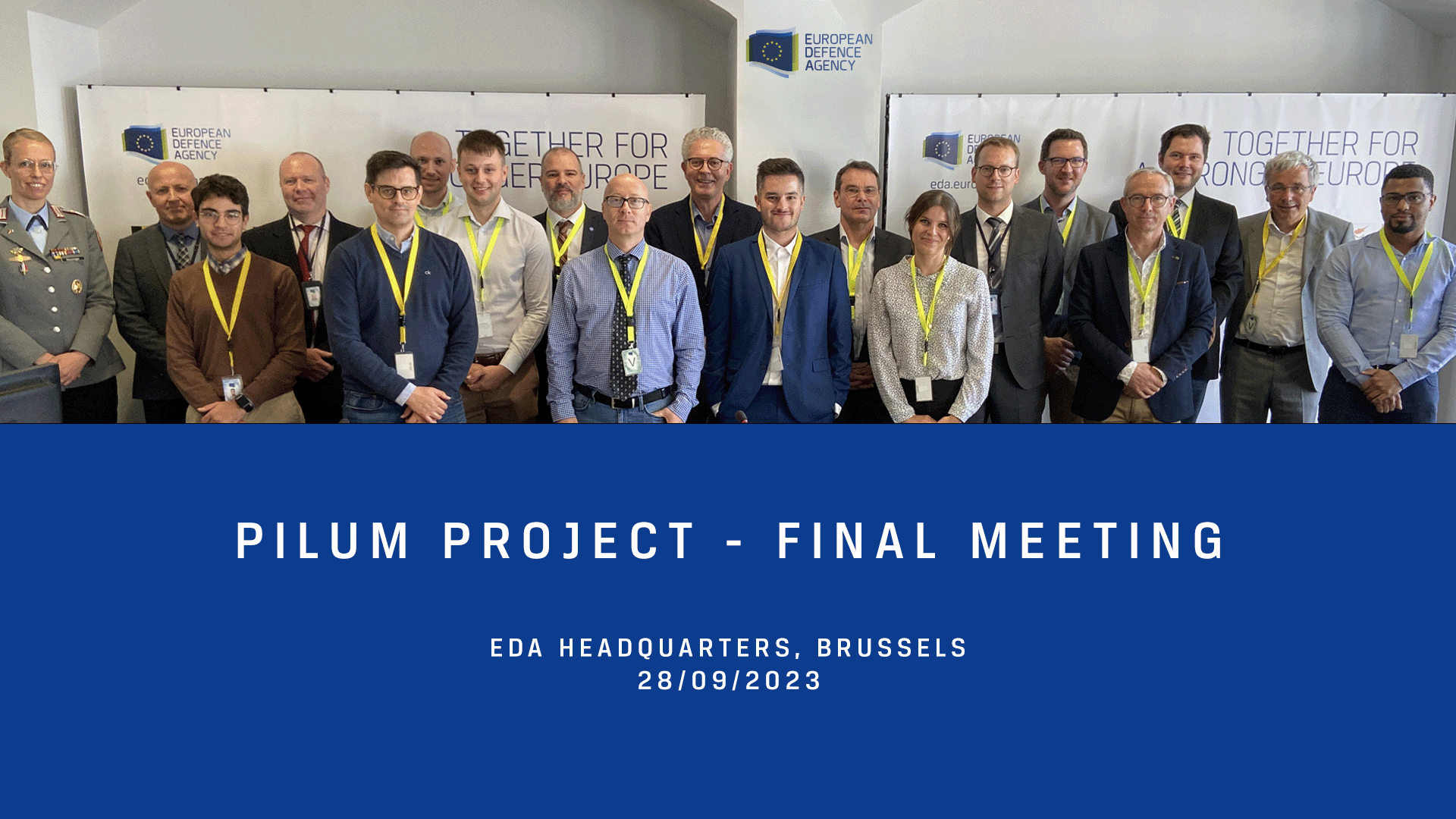[28/09/2023]
Electromagnetic artillery moves into top gear
At the final meeting of the PILUM project, launched in April 2021, which took place today at the European Defence Agency (EDA) in Brussels, the consortium members under the coordination of ISL passed in review the main research topics studied and the results obtained for each of the three components of the EMRG: the railgun, the hypersonic projectile and electric energy storage and conversion.
All seven partners from the four European countries involved in this feasibility study concluded that considerable progress had been made in each of the three EMRG component areas, thus paving the way for next-level electromagnetic artillery of the future.
The results obtained in the PILUM project constitute a solid basis that will flow into the next stage of development, namely the research project THEMA (TecHnology for ElectroMAgnetic Artillery), which aims to prepare the implementation of an electromagnetic railgun demonstrator on a firing range from 2028.
Railgun
 ISL electromagnetic railgun laboratory demonstrator
ISL electromagnetic railgun laboratory demonstrator
The crucial parts of the railgun launcher, which are exposed to high temperatures and high-velocity friction, were cladded with specific wear-resisting materials, thus drastically increasing the life-time of the railgun barrel.
Hypersonic projectile
 ISL hypersonic projectile
ISL hypersonic projectile
A preliminary concept for hypersonic projectiles was worked out for the velocity range up to MACH 6. Wind-tunnel tests, simulations using computational fluid dynamics and in particular, open-range, free-flight tests were conducted in order to evaluate performance at MACH 5.
Energy storage and conversion
 XRAM inductive power supply
XRAM inductive power supply
The PILUM project also analysed several energy supply concepts including the capacitive and inductive energy concepts in detail.
For the capacitive energy concept, a life cycle assessment was carried out, showing that under the specific operational conditions derived from the scenarios, the energy density of the pulsed power system is about 25% higher than the nominal values indicated in the manufacturer’s technical specifications.
A promising solution for railgun applications is the XRAM inductive energy concept provided by ISL with its capability of storing magnetic energy in a relatively low volume. The switching technique remains a technological challenge that should be overcome in the maturation phase (THEMA project).
PILUM and PADR
The PILUM project is part of the Preparatory Action on Defence Research (PADR) research programme financed by the European Commission and managed by the European Defence Agency.
The call was released in 2019 under the research action “PADR-FDDT-EMERGING-03-2019: Emerging Game-changers”. The objective was to address “long-range effects” by looking for radical solutions for achieving cost-efficient long-range strike precision. PILUM proposed the electromagnetic railgun, as the significantly higher muzzle velocities, which can be achieved by using this technology, enable the projectiles to reach strike distances far beyond that of conventional artillery.
Railguns are capable of accelerating projectiles to muzzle velocities of more than 2000 m/s that can, depending on their design, achieve strike distances in the range of 200 km and beyond. The PILUM study also looked into the installation of EMRG systems on mobile naval platforms or their integration on terrestrial mobile platforms.
Funded by the European Commission within the framework of the “Preparatory Action on Defence Research” (PADR), PILUM had a budget of € 1.5 million and was coordinated by the French-German Research Institute ISL, which draws on its many years of expertise in the field of the electromagnetic railgun.
PADR PILUM paves the way for the follow-up project THEMA which aims to increase the technological maturity of the three critical components of the EMRG technology from 2024 to 2027. The project THEMA (TecHnology for ElectroMagnetic Artillery) was selected by the European Commission in June 2023 to be supported by the European Defence Fund (EDF).
LINKS
For more information about PILUM, consult the fact sheet: https://eda.europa.eu/publications-and-data/factsheets/factsheet-projectiles-for-increased-long-range-effects-using-electromagnetic-railgun-pilum
For more information about how EMRG technology could be used against a missile attack, watch the example of a scenario set in a naval environment on:
https://www.youtube.com/watch?v=5DfWXOT1FSQ&t=45s
Consortium coordinated by the French-German Research Institute of Saint-Louis (ISL)
 Photo of the consortium members taken at the final meeting of the PILUM project on 28 September 2023 at EDA in Brussels
Photo of the consortium members taken at the final meeting of the PILUM project on 28 September 2023 at EDA in Brussels
The PILUM consortium brought together seven partners from four European countries, each with its own industrial, technological and advanced scientific expertise:
• ISL, the French-German Research Institute of Saint-Louis, European leader in electromagnetic acceleration and coordinator of the project
• the Von Karman Research Institute (Belgium), specialised in fluid dynamics and propulsion
• Naval Group and Nexter (France), two major companies specialised in weapon system integration
• Diehl Defence (Germany), ammunition supplier
• Explomet (Poland), a small company specialised in the explosive cladding of metals
• Erdyn Consultants (France), an expert in the management of European collaborative projects





